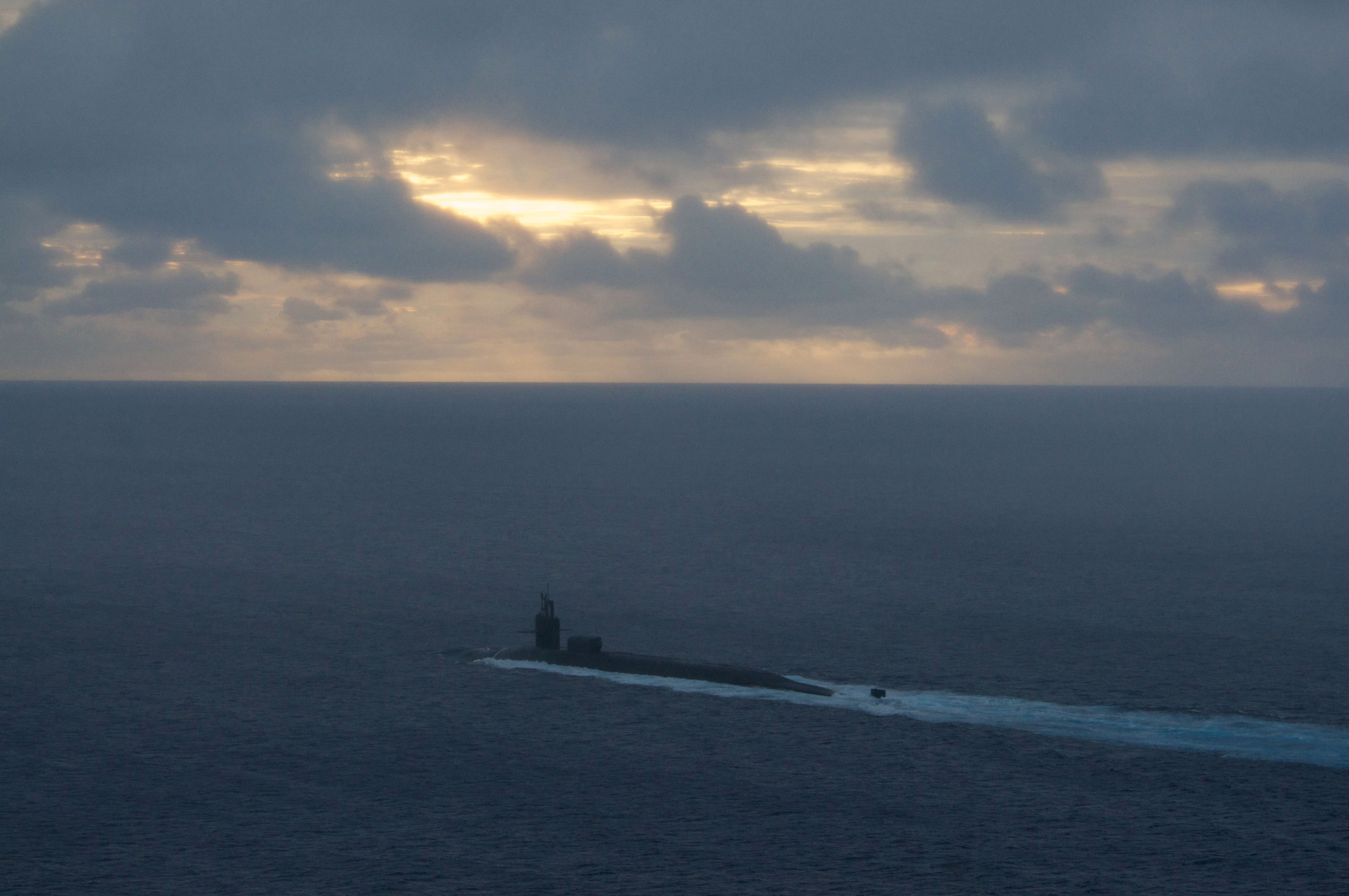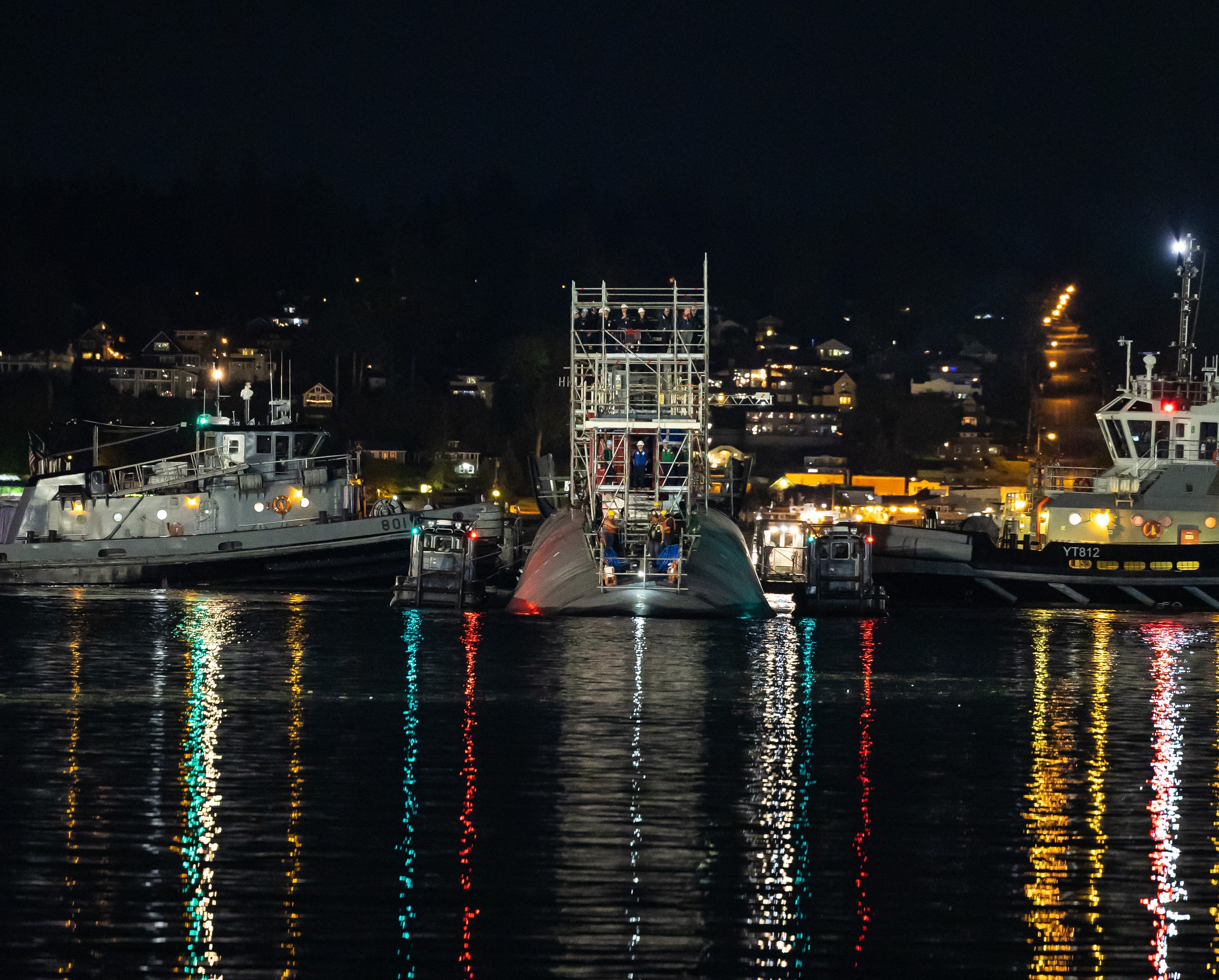
This post has been updated to correct the anticipated delivery of the first SSN(X).
ARLINGTON, Va. – After delivering the dozen nuclear ballistic missile submarines to meet the U.S. nuclear deterrent, the Navy could keep large diameter hull submarines in production, the service’s director of undersea warfare (N97) said on Wednesday.
The Navy needs to build 12 Columbia-class SSBNs to meet the requirements from the U.S. Strategic Command for nuclear ballistic missile patrols at sea, Rear Adm. Mark Behning said.
“Columbia, when it was first built and designed, is designed to replace the current Ohio-class of 14 with 12. We’re able to do that by eliminating the midlife refueling overhaul,” he said during a presentation at the Naval Submarine League 2023 annual symposium.
Following the last planned Columbia delivery in the 2040s – SSBN-838 set to replace USS Louisiana (SSBN-783) – the Navy wants to continue to build large-diameter submarines for a variety of missions.
Under the Navy’s long-range shipbuilding plan, it intends to take delivery of the first large payload submarine in 2049, but the requirements for that hull are far from set. The Navy is trying to avoid a lull in building larger submarines after the $186 billion Columbia program – like it experienced following the end of the Ohio boats in the late 1990s – and send a demand signal to industry to maintain a workforce capable of building large submarines. The service has not yet determined the cadence between hulls in future submarines after the Columbia-class program.
“Those discussions continue to go on [but] the plan is to keep [the line] open,” Behning said.
Ohio Extention

The submarine force also plans to extend the lives of up to five Ohio-class SSBNs that would provide a safety margin in case of schedule slippage in the Columbia-class program.
As of Wednesday, first-in-class District of Columbia (SSBN-826) is 40 percent complete. In the next several weeks, HII’s Newport News Shipbuilding will ship the stern section from the Virginia shipyard north to General Dynamics Electric Boat in Connecticut. Newport News builds the bows and sterns for the Columbia program, while EB constructs the section.
While the lead boat is on schedule right now, the Navy has very little margin for error, as it needs to replace the Ohio-class submarines one for one with Columbia boats.
The Navy has programmed short service life extensions on as many as five boats. The maintenance periods would each take 18 months and provide each boat with three more years of service life.
As of now, extending the service lives of the five Ohio boats – starting with USS Alaska (SSBN-732) – is in both the Fiscal Year 2025 budget and the 15-year submarine maintenance plan, program executive officer for strategic submarines Rear Adm. Scott Pappano told reporters Tuesday.
“A lot of that work is outside the [Future Years Defense Program] right now,” Pappano said, referring to the Pentagon’s five-year budget outlook.
“We have the ability to come off that decision at any time. So up until I go do that availability, I could decide not to do it. And so beyond Alaska, there’s some flux in there, so I don’t want to speculate on what other submarines.”
The Navy has until Fiscal Year 2029 to decide whether or not it will extend Alaska, Pappano said.
U.S. Strategic Command requires the submarine force to be able to surge 10 ballistic missile submarines in the case of a nuclear contingency. The current SSBN inventory is 14 boats, but without a service life extension for the Ohios, that number will dip to 13 in FY 2027, then 12 in FY 2029, according to the latest long-range shipbuilding blueprint. Without the life extension, the number of ballistic-missile boats would dip to 11 in FY 2030 through FY 2032.
Extending the lives of several Ohio hulls would give the Navy a buffer to meet that 10-submarine surge requirement, Pappano said.
SSN(X)

As for the next-generation attack submarine, Behning said the Navy will finish the final analysis of alternatives for its heavily armed, blue water attack boat will next year.
The AoA for SSN(X) will be finalized in Fiscal Year 2024, with an anticipated start of construction in 2030 and delivery in 2042 for the first hull.
“We are on plan in nearing completion of the initial capabilities document. It’s cleared the Navy and is now working through the Joint Staff with the intent to commence the analysis of alternatives for the capabilities of this platform here in ’24,” Behning said.
The Navy is designing SSN(X) as a larger, faster and more heavily armed attack submarine than the current Virginia-class boats. It’s expected to have characteristics more in line with the Seawolf-class attack submarines, USNI News previously reported.
The requirements process will refine the balance of capabilities with how affordable the Navy can make the program.
The service estimated the attack boats will cost $6.7 billion to $7 billion, while the Congressional Budget Officer estimated the submarines could cost up to $1 billion more, according to CBO’s analysis of the latest shipbuilding plan.





